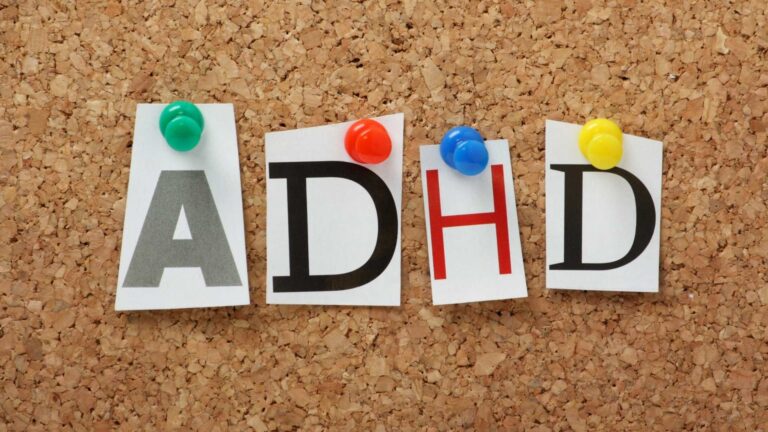Table of Contents
How Do the Seven Dimensions of Applied Behavior Analysis Make ABA Therapy So Effective?
Applied Behavior Analysis or ABA therapy is a widely recognized model for supporting individuals with autism spectrum disorder (ASD) in learning essential skills to improve their quality of life and manage complex behavior. As caregivers learn more about ABA principles and their loved ones receive ABA services, naturally, some questions arise, such as:
How do the seven dimensions of Applied Behavior Analysis make ABA therapy so effective?
The seven dimensions of ABA provide a comprehensive framework for ABA providers, educators, and caregivers to support individuals with autism in acquiring vital skill sets. These skills often help clients receiving ABA care gain more independence so they can live life with greater ease and accommodations in some cases as they need them.
The seven dimensions of ABA are:
1. Applied
2. Behavioral
3. Analytical
4. Technological
5. Conceptually Systematic
6. Effective
7. Generality
This blog post by ABA Centers of Rhode Island explores the 7 Dimensions of Applied Behavior Analysis to simplify their application in ABA and explain why they are so important. We hope that by making this information more digestible to everyone, from parents to seasoned ABA providers, it can be more appropriately applied and understood.
For more information about ABA Centers of Rhode Island, click here. To read other blogs about ABA therapy, ABA, and autism, visit us here.
Overview of Applied Behavior Analysis
According to Autism Speaks, ABA is a scientific approach to understanding behavior and how environmental factors can influence it. ABA is widely used in autism symptom management to help those on the spectrum develop:
- Social Skills
- Communication Capabilities
- Learning Skills
- Daily Living skills
ABA is grounded in empirical research and employs evidence-based techniques to bring about meaningful and positive changes in behavior. The purpose of ABA is never to change a neurodivergent child’s personality or cure their autism but to highlight their strengths.
Additionally, implementing the seven dimensions of ABA ensures that the skills those learn in ABA apply across many areas of their lives. Fortunately, understanding the seven dimensions of ABA can help many appreciate its dynamic and flexible nature more comprehensively.
Exploring the 7 Dimensions of ABA
In 1968, Baer, Wolf, and Risley described the seven dimensions of ABA to serve as a foundation for all ABA practices and interventions. Each dimension ensures ABA sessions are practical, ethical, and tailored to the needs of clients, making sure this care ultimately enhances their lives.
Dimension 1: Applied – Real-World Applications
The “Applied” dimension of ABA is all about ensuring that ABA interventions have real-world significance. For parents and educators, this means that the behaviors ABA providers target for change are socially significant and improve the person’s life distinctly. This dimension of ABA should always consider the person’s abilities, culture, and communities.
Here are some instances of real-world application of the applied dimension of ABA:
- Teaching Communication Skills: If a child struggles to express their needs, an ABA intervention might focus on teaching them how to use words or gestures to communicate. This skill is not only valuable for therapy sessions but also crucial in everyday interactions.
- Daily Living Skills: Teaching a child to dress independently or wash their hands can significantly improve their independence and lessen their reliance on others.
By focusing on socially significant behaviors, ABA ensures that the interventions bring about meaningful changes that matter in real-world settings to the individual receiving ABA care.
Dimension 2: Behavioral – Understanding Behavior and Environment
The “Behavioral” dimension of ABA emphasizes that behaviors may be observable and measurable. To ensure behavior is measurable, providers focus on specific actions rather than abstract concepts like perceptions, feelings, or thoughts.
Understanding behavior in autism objectively and as a function of environmental variables helps identify individual triggers and their consequences. This comprehension leads to the ability to shape one’s behavior in the long term by understanding its purpose.
Here are some examples of how the behavioral dimension of ABA applies:
- Identifying Antecedents and Triggers: For instance, if a child begins to tantrum, it’s crucial to determine what triggers these behaviors. Is it a reaction to being told no to access a toy, or does it happen in noisy or crowded environments
- Measurable Outcomes: Rather than saying a child is “more cooperative,” ABA focuses on measurable outcomes that form concrete data, like ” child completes tasks within five minutes without prompts.”
By breaking down behaviors into observable and measurable components, ABA practitioners can develop interventions that yield concrete results.
Dimension 3: Analytical – The Importance of Data Collection and Analysis
The “Analytical” dimension of ABA therapy relies on data collection to understand and evaluate the effectiveness of the interventions that ABA providers use. Collecting and assessing data is critical in ABA to ensure that the interventions are working as intended.
Being analytical in ABA includes:
- Collecting Baseline Data: Before starting any intervention, it’s important to collect baseline data to understand the current level of the behavior. Baseline data also helps in setting realistic goals throughout ABA therapy. For example, it’s crucial to collect how many times per minute the child spits before redirecting the spitting to another more helpful behavior.
- Data-Driven Decision-Making: This ensures that ABA interventions rely on evidence and that ABA providers can adjust their designs for maximum effectiveness. Being data-driven also ensures that the child receiving ABA is not subject to route or useless trial.
Dimension 4: Technological – Defining and Using Precise Procedures
The “Technological” dimension of ABA ensures that providers clearly define and replicate ABA interventions. ABA therapy should include steps and details that anyone with the necessary training can consistently implement to accomplish the same result.
Being technological in ABA therapy includes providing:
- Clear Instructions: For example, if an ABA intervention involves using positive reinforcement systems to reinforce the target behavior, the provider should clearly outline the steps.
- Consistency Across Settings: Clear and precise procedures help maintain consistency across different settings, whether at home, school, or therapy sessions.
By ensuring that interventions are technological, ABA practitioners can maintain high treatment integrity and ensure that the ABA interventions are effective and consistent.
Dimension 5: Conceptually Systematic – Grounded in Science
The “Conceptually Systematic” dimension of ABA ensures that all interventions rely on the principles of behavior analysis. ABA techniques that providers implement during ABA sessions cannot be random and should always follow scientific principles.
To ensure ABA therapy sessions remain scientific, they must be:
- Rooted in Behavior Principles: interventions should use reinforcement (a cornerstone of behavior analysis) to increase helpful behaviors.
- Research-Based: Individuals select interventions based on their proven effectiveness, according to research studies.
By grounding interventions in the science of behavior, ABA ensures that the techniques are reliable and well-researched.
Dimension 6: Effective – Measuring Success
The “Effective” dimension of ABA focuses on the practical effectiveness of ABA interventions. ABA therapy must produce meaningful changes in behavior that significantly improve life.
This ABA dimension includes:
- Behavior Change: For an intervention to be considered adequate, there should be a clear and measurable change in the target behavior. For instance, if the goal is to reduce tantrums, there should be a noticeable decrease in the frequency and intensity of tantrums.
- Social Validity: The changes should also be socially valid, meaning they make a meaningful difference in the individual’s life and offer value to those around them.
By ensuring ABA interventions are effective, ABA therapy is not just practicing a theory but producing tangible, positive outcomes for individuals with ASD that serve long term.
Dimension 7: Generality – Lasting Behavior Change
The “Generality” dimension aims to produce behavior changes that are lasting over time and across different settings. Generalizing skills are skills individuals learn with their ABA providers that should apply to other environments and be maintainable over time.
The following examples more clearly define generalization in ABA:
- Across Settings: For example, if a child learns social skills during therapy sessions, they should be able to use these skills at home, in school, and social settings.
- Over Time: Behavior change in ABA should last even after the therapy has ended. Establishing mastery ensures the client can benefit from the skills they learn long after the session ends.
By focusing on generality, ABA ensures that the benefits of interventions are long-lasting and applicable in various contexts.
The 7 Dimensions of ABA Are Important and Enhance ASD Care!
Understanding the seven dimensions of Applied Behavior Analysis is crucial for parents, educators, and professionals in the autism community. These seven dimensions ensure that ABA therapy sessions are practical, ethical, and custom, so they meet the needs of everyone receiving ABA support.
By focusing on real-world applications, measurable behaviors, data-driven decisions, precise procedures, scientific grounding, practical effectiveness, and lasting change, ABA provides a comprehensive framework for supporting individuals with autism that lasts!
So Happy ABA learning from ABA Centers of Rhode Island!
More about How ABA Centers of Rhode Island Uses the 7 Dimensions Of ABA
At ABA Centers of Rhode Island, we are committed to helping your young loved one on the spectrum achieve meaningful and lasting behavior change one ABA session at a time.
Our options, like in-home ABA care and ASD diagnostics services, offer various ways to support your neurodiverse family. Contact us at ABA Centers of Rhode Island today to learn more about our ABA and ASD services via this online link or by calling us at (855) 922-4184.
Our team of expert ABA providers is here to support you each step of the way.








